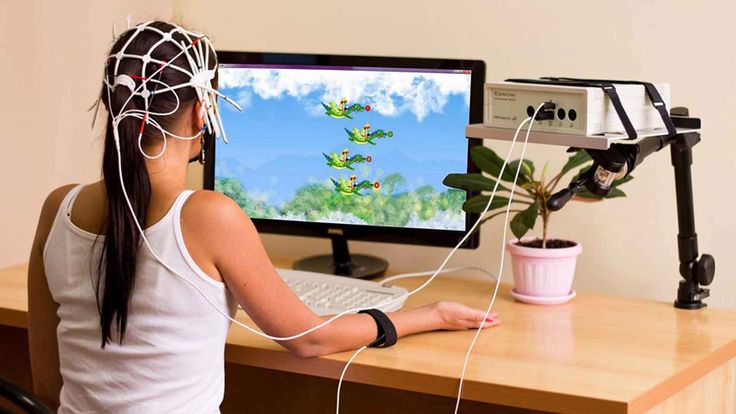Abstract
Purpose of Review
The purpose of this review is to describe the current state of telemedicine within neuro-oncology. This article will address the development of tele-neuro-oncology over time with a focus on current use and applications of telemedicine within the field. Current modalities and practical considerations for tele-neuro-oncology visits and opportunities for growth will be highlighted.
Recent Findings
The use of telemedicine has expanded significantly during the COVID-19 pandemic, particularly within neuro-oncology. The use of telemedicine is widely accepted by neuro-oncologic patients and providers and continues to expand in utilization and scope. The use of tele-neuro-oncology is expected to develop further with opportunities for multidisciplinary and integrated care, clinical trials, research, and education.
Summary
Telemedicine provides a unique, patient-centered approach to neuro-oncologic care. Telehealth will remain a valuable tool, and its use and role are expected to expand within neuro-oncology.
Introduction
Telemedicine is defined the remote diagnosis, treatment, and management of patients through the use of communication technologies and electronic information [1]. A telemedicine encounter typically occurs using a secure telephone or video conferencing platform when patients and providers are separated by distance. The use of telemedicine has grown over the past decade across multiple medical specialties, initially as a means of addressing geographic and social barriers to healthcare and improving access to subspeciality care [2, 3].
Within medical oncology, telemedicine has been used to facilitate multidisciplinary care, access second opinions, and expand healthcare access for patients with rare tumor types [4, 5]. Telehealth has been utilized for nearly two decades to provide care for neurologic patients and has evolved significantly since its initial use for acute stroke management [6]. Today, the use of telemedicine has expanded across most clinical neurologic subspecialties and has been shown to be feasible and satisfactory for patients and providers alike [8,9,10].
Prior to the COVID-19 pandemic, limited published data existed regarding the use and experience of telemedicine within the field of neuro-oncology. The COVID-19 pandemic beginning in 2020 resulted in rapid expansion of telehealth across the globe. In this new era of physical distancing, telemedicine has proven to be a useful tool for providing high-quality clinical care while limiting patients’ exposure and physical touchpoints within a healthcare system [11].
This review article will address the current state of telehealth within neuro-oncology and its expansion during the COVID-19 pandemic. The delivery of telehealth and clinical considerations of tele-neuro-oncologic visits will be discussed in addition to the benefits, limitations, and opportunities for growth of this technology.
Delivery of Telemedicine
Tele-neuro-oncologic care should be delivered over a secure and HIPPA-compliant telephone connection or video conferencing platform. Virtual visits are treated with the same degree of professionalism, security, and privacy as in-person evaluations. Providing clear instructions and training to clinical and administrative staff and patients is imperative to ensure a successful telehealth visit. For patients with cognitive or visual impairment, the addition of a patient support person should be considered. All telemedicine encounters should begin with obtaining patient consent for the visit. For children with brain tumors, a caregiver or legal representative should provide consent and be present for the duration of the visit. All telemedicine encounters should be documented within the appropriate patient record.
Video encounters are considered the gold standard and recommended for direct audio-visual communication and patient evaluation. Video encounters have several advantages over telephone visits when evaluating a patient with neuro-oncologic disease. A neurologic exam can be feasibly and accurately completed during a video visit, with some limitations such as examination of reflexes or sensation. Skill and mastery of the virtual neurologic examination by clinicians are necessary [12•]. Systemic findings such as oral candidiasis, lower extremity edema, and skin lesions can also successfully be assessed using a video encounter [13]. A video encounter also allows for the clinician to share their screen to review neuroimaging and laboratory results with patients [14••]. Importantly, during a video encounter, providers are able to witness patients’ function, move, and ambulate within their home environments. Virtual consent for cancer therapies, genetic testing, or clinical trials may also be obtained during the video encounter and should be clearly recorded in the patient’s medical record [15]. Policies regarding obtaining virtual consent for treatment or research vary by institution, and local guidance should be followed.
Telephone encounters are also used in telemedicine and may be appropriate for certain patients when visual evaluation and neurologic examination are not absolutely necessary or when technologic or connectivity issues preclude the use of video conferencing. Video encounters have been shown to be barriers to care for older patients and those with limited Internet accesss [16]. Telephone encounters may be suitable for stable patients such as long-term brain tumor survivors, those with low-grade or benign lesions, stable neurologic complications of cancer (such as chemotherapy induced neuropathy), or those with mild symptoms. Telephone encounters may also be used for urgent evaluation if a video or in-person visit is not feasible in a timely manner [17].
Benefits of Tele-neuro-oncology
The use of telemedicine has many benefits for neuro-oncologic patients. First and foremost, telehealth allows for patients to be physically and geographically distanced from their providers. Often this results in providing care within a patient’s own home. Many neuro-oncology centers are located within urban areas that may be difficult for patients to access due to distance and resources. Telemedicine removes the need for long-distance travel for some patients which improves access to specialized neuro-oncologic care, particularly for patients in regions without established neuro-oncology providers. This also creates opportunities for expedited second opinion consultations, which may occur at centers outside of a patient’s home city or state and are not always feasible with traditional in-person visits.
Additionally, many patients with neuro-oncologic diseases have cognitive or neurologic symptoms that limit their ability to travel for in-person clinical care. Patients at high risk of treatment toxicities, such as older patients, may benefit from increased frequency of telemedicine visits for clinical assessment and toxicity monitoring [18]. For at-risk patient populations, longitudinal monitoring using telehealth may allow for improved symptom management and earlier detection of toxicities or disease progression. Additionally, telemedicine visits can often be coordinated more quickly than in-person visits, allowing for expedited evaluation and management of new or progressive symptoms.
Another advantage of virtual visits is the ability to have multiple members of a patient’s family or support network be present during the visit. This can be particularly useful for patients with memory and cognitive deficits, where information obtained from the patient may be limited. Additionally, the presence of key caregivers ensures accurate information is received from the clinician, communication is streamlined, and that concerns from all parties are appropriately addressed. This enhanced communication helps to build trust with the medical team and allows for expedited evaluation of patient and family concerns.
Telemedicine in medical oncology has been successful in expanding access to additional services including genetic counselling, survivorship care, palliative care, and support services [19, 20]. Virtual visits allow for multiple specialty consultations, often in a timelier fashion than in-person visits, due to decreased constraints by clinic scheduling and availability. Enhanced services provided via telemedicine may also include speech therapy, physical therapy, and integrated and lifestyle counselling. Additionally, providers are able to share and review images and documents with patients in real time during the visit which may improve communication and enhance patient education. This is particularly useful when completing patient education regarding medications and cancer therapies and when reviewing consent for clinical trials.
Limitations and Potential Risks of Tele-neuro-oncology
While telemedicine has many advantages, there are limitations and potential barriers to more widespread use and implementation. The primary barriers to telehealth are technology specific including issues with connectivity, communication devices, and the technologic proficiency of users [21]. Telehealth requires training, technological skill, and proficiency in the use of virtual conferencing platforms for medical staff, clinicians, and patient alike. Appropriate resources, training, and familiarity with workflows are necessary for clinical staff to properly create and execute virtual encounters. Additionally, staff and clinicians should be trained on technical troubleshooting for common connectivity issues to assist patients in real time during a telemedicine visit. Virtual conferencing platforms should be secure, easy to use, cost-effective, and integrated with the electronic medical record [22, 23]. Patients should receive clear instructions and guidelines on the appropriate use of virtual platforms. Patients with lower technology literacy such as some older patients, those with language barriers, lower levels of education, and cognitive impairment may require additional support prior to a telemedicine visit [24].
Equitable access and distribution of telehealth services must also be considered. Telehealth services may not be accessible for patients who lack access to affordable or reliable broadband Internet or communication devices [25]. Some clinicians and practices may not have the resources or infrastructure to support costly audiovisual equipment, computer software, and staff required for telehealth. Additionally, some institutions may have internal policies that do not support or encourage the use of telemedicine.
During the COVID-19 pandemic, reimbursement for telemedicine service was supported by Medicare, Medicaid, and most health insurance companies. This coverage extended to both video and telephone encounters, although reimbursement for telephone encounters has been limited [26]. As the public health emergency evolves, coverage and reimbursement for telemedicine is expected to change. Governmental policies supporting the continued use and expansion of telemedicine services will play a key role in determining the future of telehealth. Competitive rates for telemedicine visits are needed for flexibility and sustainability of healthcare systems [27]. The integration of telehealth services within neuro-oncology will also depend on local, institutional, and state guidelines.
A frequent criticism of telemedicine is the impact it may have on the patient-clinician relationship. Studies across multiple specialties have demonstrated that telehealth visits are at least equivalent for patient and provider satisfaction when compared to in-person visits [28,29,30]. Additional care should be taken by providers having difficult conversations or providing bad news. Lastly, not all aspects of a comprehensive neurologic or physical exam can be adequately completed over video. Patients with new or unexplained symptoms which require a detailed examination or diagnostic examination maneuvers that cannot be completed via video should be evaluated in-person.
Future Directions for Tele-neuro-oncology
Telemedicine presents an opportunity to evolve the way in which clinical and supportive care, research including clinical trials, and education are delivered. Multidisciplinary care is paramount for neuro-oncologic patients, often involving providers from neurosurgery, radiation oncology, medical oncology, neurologic subspecialties, and palliative care. Advanced practice providers, nurses, social workers, and support staff are also key members of the patient care team. As oncologic patients become more complex, care teams will grow in number and specialty and may include palliative care, genetics, psychiatry, or mental health providers and others. The use of an online video conferencing platform provides the opportunity for simultaneous or sequential care by multiple clinicians and members of the care team. This allows for streamlined multidisciplinary care in real time without the constraints of provider schedules, physical clinic space, or geography. Multidisciplinary virtual visits provide patients the ability to have a robust discussion about their care, limit the cost and resources required for multiple in-person specialist appointments, and help to build trust and consensus. From a provider standpoint, multidisciplinary visits allow for real-time discussion and development of a treatment plan with colleagues, ideally leading to more expedited patient care and management. These multidisciplinary visits may be of particular importance for advanced care planning, complex patients, those with rare tumor types and patients near the end of life.
Patient and provider education is another opportunity for telemedicine. Telemedicine has been successfully used to provide patient education and peer support for patients with various medical conditions [31,32,33]. The use of a virtual format is conducive for broad brain tumor–specific education of multiple patients simultaneously from geographically disparate locations. Facilitated group sessions also allow for patients and caregivers with similar diagnoses to learn from and support each other, fostering a sense of community. These patient-centered forums present a unique opportunity to highlight specific programs, ongoing research, and clinical trials.
Additionally, multidisciplinary discussion may be provided in a virtual tumor board setting which allows multiple providers to discuss the diagnosis, treatment, and management of patients with brain tumors, regardless of their geographic location [34]. Tumor boards are an essential component of comprehensive oncologic care and require the presence and input of clinicians from multiple specialties [35]. The virtual format allows for the expansion of the local tumor board and may include regional or national experts and may lead to improved attendance and timely discussion by clinicians due to reduced travel time [36]. Virtual tumors boards allow for bypassing of geographic barriers, which may access to neuro-oncologic care, and for collaboration with other neuro-oncologic providers in the region. Addition of other providers may also raise awareness for new technologies, treatments, and clinical trials.
Integration of telehealth within clinical trials represents a significant opportunity for the advancement of neuro-oncologic research. In a field where treatment options are limited and outcomes for most primary brain tumors remain poor, enrollment of patients on clinical trials is paramount [37]. In addition to patient- and tumor-specific factors, socioeconomic factors such as employment status, level of education, and treatment facility location have been shown to influence enrollment onto glioblastoma clinical trials [38]. Additionally, older patients with brain tumors have been historically underrepresented on interventional clinical trials [39•].
Currently, most primary brain tumor clinical trials are located at major brain tumor programs in urban centers. The geographic location of these centers alone may prohibit study enrollment for rural and low socioeconomic status patients and those unable to drive due to neurologic deficits [40•]. Telemedicine provides an opportunity for patients to receive information and screening for clinical trials at brain tumor programs around the country. This tool also allows centers to potentially increase enrollment on studies as the number of potential subjects increases. Some study visits may be able to be safely completed via telemedicine, decreasing the burden on patients and potentially decreasing study cost. The development of appropriate criteria and clinical assessments for virtual study encounters are needed for telemedicine to further develop within the field.
Conclusion
The COVID-19 pandemic has catalyzed the use of telemedicine which has significant implications for the care of neuro-oncologic patients. Virtual clinical, specialized, and multidisciplinary care can feasibly be provided for this patient population. Through video conferencing, providers can complete a neurologic examination, evaluate treatment toxicities, review and share imaging to assess treatment response and provide patient education and supportive care interventions, while involving additional members of the patient’s family and care team. The use of telemedicine is expected to grow as patients and providers become more accustomed to this technology and provides an opportunity to increase access to subspecialty neuro-oncologic care. Clinical trials represent a major utilization for telehealth as a means of decreasing the burden associated with travelling for clinical trials while improving access to research and potentially impacting enrollment on studies. Thoughtful consideration and support from clinicians, study sponsors, regulatory agencies, and payers is needed for virtual neuro-oncologic care to evolve to fit the needs of patients and the field.
References
Papers of particular interest, published recently, have been highlighted as: • Of importance •• Of major importance
-
Institute of Medicine (IOM). Telemedicine: a guide to assessing telecommunications for health care. National Academies Press (US); 1996. Accessed August 5, 2021. https://www.ncbi.nlm.nih.gov/books/NBK45440
-
Guzik AK, Switzer JA. Teleneurology is neurology. Neurology. 2020;94(1):16–7.
-
Dorsey ER, Glidden AM, Holloway MR, Birbeck GL, Schwamm LH. Teleneurology and mobile technologies: the future of neurological care. Nat Rev Neurol. 2018;14(5):285–97.
-
Paterson C, Bacon R, Dwyer R, et al. The role of telehealth during the COVID-19 pandemic across the interdisciplinary cancer team: implications for practice. Semin Oncol Nurs. 2020;36(6):151090.
-
Smrke A, Younger E, Wilson R, et al. Telemedicine during the COVID-19 pandemic: impact on care for rare cancers. JCO Glob Oncol. 2020;6(6):1046–51.
-
Schwamm LH, Holloway RG, Amarenco P, et al. A review of the evidence for the use of telemedicine within stroke systems of care: a scientific statement from the American heart association/American stroke association. Stroke. 2009;40(7):2616–34.
-
Hollander JE, Carr BG. Virtually Perfect? Telemedicine for Covid-19. N Engl J Med. Published online March 11, 2020.
-
Panda PK, Dawman L, Panda P, Sharawat IK. Feasibility and effectiveness of teleconsultation in children with epilepsy amidst the ongoing COVID-19 pandemic in a resource-limited country. Seizure. 2020;81:29–35.
-
Ciampi E, Uribe-San-Martin R, Cárcamo C. COVID-19 pandemic: the experience of a multiple sclerosis centre in Chile. Mult Scler Relat Disord. 2020;42:102204.
-
Kristoffersen E, Faiz K, Sandset E, et al. Hospital-based headache care during the Covid-19 pandemic in Denmark and Norway. J Headache Pain. 2020;21(1).
-
Grossman SN, Han SC, Balcer LJ, et al. Rapid implementation of virtual neurology in response to the COVID-19 pandemic. Neurology. 2020;94(24):1077–87.
-
Al Hussona M, Maher M, Chan D, Micieli JA, Jain JD, Khosravani H, Izenberg A, Kassardjian CD, Mitchell SB. The Virtual neurologic exam: instructional videos and guidance for the COVID-19 era. Can J Neurol Sci. 2020;47(5):598-603. Provides practical applications and instruction for virtual neurologic examinations.
-
Sirintrapun SJ, Lopez AM. Telemedicine in Cancer Care. Am Soc Clin Oncol Educ Book. 2018;38:540–5.
-
Hatcher-Martin JM, Adams JL, Anderson ER, et al. Telemedicine in neurology: Telemedicine Work Group of the American Academy of Neurology update. Neurology. 2020;94(1):30-38. Describes expert consensus on best practices and practical considerations for telehealth visits with neurologic patients.
-
Reeder-Hayes KE, Roberts MC, Henderson GE, Dees EC. Informed consent and decision making among participants in novel-design phase I oncology trials. J Oncol Pract. 2017;13(10):e853–72.
-
Strowd R, Strauss L, Graham R, et al. Rapid implementation of outpatient teleneurology in rural Appalachia: barriers and disparities. Neurol Clin Pract. 2020;13:https://doi.org/10.1212/CPJ.
-
EmfieldRowett K, Christensen D. Oncology nurse navigation: expansion of the navigator role through telehealth. Clin J Oncol Nurs. 2020;24(3):24–31.
-
Wasilewski A, Alam A, Mohile N. Chemotherapy toxicities and geriatric syndromes in older patients with malignant gliomas. J Geriatr Oncol. 2021;12(1):134–8.
-
Sirintrapun SJ, Lopez AM. Telemedicine in Cancer Care. Am Soc Clin Oncol Educ Book. 2018;38:540–5.
-
Worster B, Swartz K. Telemedicine and palliative care: an increasing role in supportive oncology. Curr Oncol Rep. 2017;19(6):37.
-
Scott Kruse C, Karem P, Shifflett K, Vegi L, Ravi K, Brooks M. Evaluating barriers to adopting telemedicine worldwide: a systematic review. J Telemed Telecare. 2018;24(1):4–12.
-
Chirra M, Marsili L, Wattley L, Sokol LL, Keeling E, Maule S, Sobrero G, Artusi CA, Romagnolo A, Zibetti M, Lopiano L, Espay AJ, Obeidat AZ, Merola A. Telemedicine in neurological disorders: opportunities and challenges. Telemed J E Health. 2019;25(7):541–50.
-
Zulfiqar AA, Hajjam A, Andrès E. Focus on the different projects of telemedicine centered on the elderly in France. Curr Aging Sci. 2019;11(4):202–15.
-
Fallahzadeh R, Rokni SA, Ghasemzadeh H, Soto-Perez-de-Celis E, Shahrokni A. Digital health for geriatric oncology. JCO Clin Cancer Inform. 2018;2:1–12.
-
Julien HM, Eberly LA, Adusumalli S. Telemedicine and the Forgotten America. Circulation. 2020;142(4):312–4.
-
Bajowala SS, Milosch J, Bansal C. Telemedicine Pays: Billing and Coding Update. Curr Allergy Asthma Rep. 2020;20(10):60.
-
Temesgen ZM, DeSimone DC, Mahmood M, Libertin CR, VaratharajPalraj BR, Berbari EF. Health care after the COVID-19 pandemic and the influence of telemedicine. Mayo Clin Proc. 2020;95(9S):S66–8.
-
Kruse CS, Krowski N, Rodriguez B, Tran L, Vela J, Brooks M. Telehealth and patient satisfaction: a systematic review and narrative analysis. BMJ Open. 2017;7(8):e016242.
-
Becevic M, Boren S, Mutrux R, Shah Z, Banerjee S. User satisfaction with telehealth: study of patients, providers, and coordinators. Health Care Manag (Frederick). 2015;34(4):337–49.
-
Dobrusin A, Hawa F, Gladshteyn M, et al. Gastroenterologists and patients report high satisfaction rates with telehealth services during the novel coronavirus 2019 pandemic. Clin Gastroenterol Hepatol. 2020;18(11):2393-2397.e2.
-
Aghdam M, Vodovnik A, Hameed R. Role of Telemedicine in multidisciplinary team meetings. J Pathol Inform. 2019;10(1).
-
Nelson EL, Yadrich DM, Thompson N, Wright S, Stone K, Adams N, Werkowitch M, Smith CE. Telemedicine support groups for home parenteral nutrition users. Nutr Clin Pract. 2017;32(6):789–98.
-
Greenwood DA, Gee PM, Fatkin KJ, Peeples M. A systematic review of reviews evaluating technology-enabled diabetes self-management education and support. J Diabetes Sci Technol. 2017;11(5):1015–27.
-
Snyder J, Schultz L, Walbert T. The role of tumor board conferences in neuro-oncology: a nationwide provider survey. J Neurooncol. 2017;133(1).
-
Charara RN, Kreidieh FY, Farhat RA, et al. Practice and impact of multidisciplinary tumor boards on patient management: a prospective study. J Glob Oncol. 2017;3(3):242–9.
-
Gebbia V, Guarini A, Piazza D, Bertani A, Spada M, Verderame F, Sergi C, Potenza E, Fazio I, Blasi L, La Sala A, Mortillaro G, Roz E, Marchese R, Chiarenza M, Soto-Parra H, Valerio MR, Agneta G, Amato C, Lipari H, Baldari S, Ferraù F, Di Grazia A, Mancuso G, Rizzo S, Firenze A. Virtual Multidisciplinary Tumor Boards: A Narrative Review Focused on Lung Cancer. Pulm Ther. 2021;4:1–14.
-
Nabors LB, Portnow J, Ahluwalia M, et al. Central nervous system cancers, version 3.2020. JNCCN J Natl Compr Cancer Netw. 2020;18(11):1537–70.
-
Harrison RA, Anderson MD, Cachia D, Kamiya-Matsuoka C, Weathers SS, O’Brien BJ, Penas-Prado M, Yung WKA, Wu J, Yuan Y, de Groot JF. Clinical trial participation of patients with glioblastoma at The University of Texas MD Anderson Cancer Center. Eur J Cancer. 2019;112:83–93.
-
Liu Y, Wasilewski A, Mohile NA. Disparities in patient enrollment on glioblastoma clinical trials. CNS Oncol. 2020;9(2):CNS59. Highlights disparities by age and gender for glioblastoma interventional clinical trials.
-
Lee EQ, Chukwueke UN, Hervey-Jumper SL, et al. Barriers to accrual and enrollment in brain tumor trials. Neuro Oncol. 2019;21(9):1100-1117. Defines and proposes solutions for barriers to brain tumor clinical trials.






